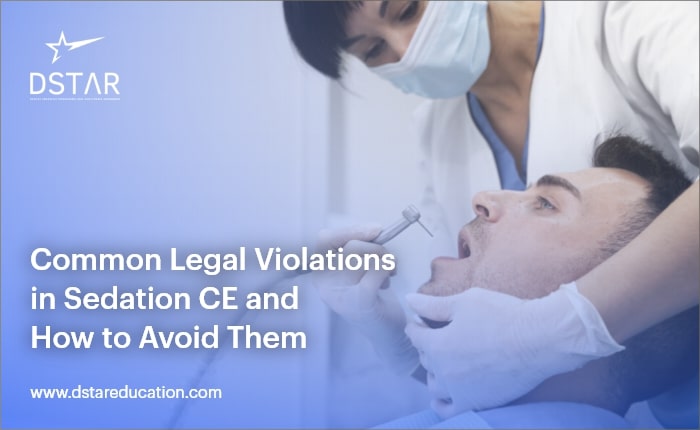CHECKLISTs in Dentistry and Medicine.
The use of checklists in medicine and dentistry has evolved over time, and research has demonstrated their effectiveness in improving patient outcomes and enhancing efficiency. Let’s delve into the history and evidence:
- Early Beginnings:
- The concept of checklists has its roots in various fields, including aviation and engineering.
- In 1935, the US Army Air Corps initiated a final set of aircraft evaluations at Wright Field, Dayton, Ohio, which included the use of checklists1.
- These early checklists aimed to ensure that critical steps were not overlooked during complex tasks.
Remember that checklists are powerful tools to standardize care, prevent errors, and improve patient outcomes. Their consistent use contributes to safer and more efficient healthcare delivery12.
- Surgical Checklists:
- Surgical checklists gained prominence with the introduction of the WHO Surgical Safety Checklist in 2008.
- This checklist became an international standard for safe theater practice and led to significant reductions in surgical errors, complications, and deaths2.
- It includes items related to patient identification, site marking, anesthesia safety, and postoperative care.
- Patient Safety and Error Prevention:
- Checklists serve as cognitive aids to guide users through accurate task completion.
- They outline criteria for consideration during specific processes, ensuring that no critical step is forgotten.
- Research has shown that checklists are effective in error prevention, standardizing care, and enhancing patient safety34.
- For instance, they have been crucial in reducing central line-associated bloodstream infections (CLABSIs) and ventilator-associated pneumonia (VAP) in intensive care units3.
- High-Reliability Organizations (HROs):
- HROs, such as nuclear power plants and aviation, have used checklists for nearly a century.
- Their experiences provide valuable insights for implementing checklists in healthcare5.
- HROs emphasize acceptance, compliance, and rigorous adherence to checklists.
- Evidence-Based Practice:
- Despite evidence of their fundamental role in error management, a standardized methodology for developing and designing medical-specific checklists is still lacking3.
- Strategies for effective checklist design include using pre-published guidelines, forming expert panels, and pilot-testing preliminary checklists3.
- Reporting Guidelines:
- In addition to clinical checklists, there are reporting guidelines for medical research studies.
- These guidelines ensure transparent reporting and improve the quality of research publications6.
- Examples include the CONSORT (for randomized controlled trials), STROBE (for observational studies), and PRISMA (for systematic reviews) checklists.
In summary, checklists play a vital role in medicine by enhancing safety, reducing errors, and promoting standardized practices. Their continued use and refinement contribute to better patient outcomes and efficient healthcare delivery.
- Surgical Safety Checklists:
- WHO Surgical Safety Checklist: Introduced in 2008, this checklist is widely used globally. It ensures critical steps are followed during surgery, reducing errors and complications1.
- Anesthesia Gas Machine Checklist: Ensures proper functioning and safety of anesthesia equipment1.
- Checklist for Withdrawal of Life Support and End-of-Life Care: Helps guide decisions related to end-of-life care1.
- FAST HUG Checklist: Covers essential clinical practices in the intensive care unit (ICU)1.
- Clinical Best Practice Checklists:
- FAST HUG (F: Feeding, A: Analgesia, S: Sedation, T: Thromboembolic prophylaxis, H: Head-of-bed elevation, U: Ulcer prophylaxis, G: Glucose control): Used in ICU settings to optimize patient care1.
- Rounding Checklists: Facilitate comprehensive patient assessments during rounds.
- Delirium Screening Checklists: Aid in identifying delirium early.
- Transfer and Handover Checklists: Ensure smooth transitions between care teams and settings.
- CLABSI Prevention Checklists: Focus on preventing central line-associated bloodstream infections.
- Airway Management Checklists: Essential for safe intubation and extubation.
- Standardized Order Set Checklists:
- Used to ensure consistent application of evidence-based guidelines for specific conditions or procedures.
- Examples include order sets for sepsis management, postoperative care, and stroke protocols.
- Daily Check Sheets:
- Used to track daily tasks and ensure adherence to best practices.
- Commonly employed in areas such as ICUs, where timely interventions are critical.
- Reporting Guidelines Checklists:
- Not directly for patient care but crucial for research.
- Examples include CONSORT (for randomized controlled trials), STROBE (for observational studies), and PRISMA (for systematic reviews).
Remember that checklists are powerful tools to standardize care, prevent errors, and improve patient outcomes. Their consistent use contributes to safer and more efficient healthcare delivery12.
- Occupational Safety and Health Administration (OSHA) Monthly Checklist:
- This checklist ensures compliance with OSHA regulations related to safety, infection control, and workplace hazards.
- It covers areas such as personal protective equipment (PPE), hazardous materials, and emergency protocols1.
- Monthly Sterilization and Solution Report:
- Dental practices rely on sterilization to prevent cross-contamination.
- The monthly sterilization and solution report ensures that sterilization equipment (such as autoclaves) is functioning correctly.
- It also tracks the usage of cold sterilization solutions (e.g., glutaraldehyde) and their effectiveness1.
- Emergency Medical Kit Checklist:
- Dental offices must be prepared for medical emergencies.
- The emergency medical kit checklist ensures that essential supplies (such as medications, oxygen, and defibrillators) are readily available.
- Regular checks help maintain the kit’s readiness1.
- SteriChek Strips or Sterilizer Monitoring for Spores:
- These strips are used to monitor the effectiveness of sterilization cycles.
- They contain bacterial spores that serve as indicators of successful sterilization.
- Regular testing ensures that instruments are properly sterilized1.
- Ultrasonic Cleaning Solutions:
- Ultrasonic cleaners are essential for thorough instrument cleaning.
- The checklist ensures that the solution is changed regularly and that the ultrasonic cleaner is functioning optimally1.
- First Aid Kit:
- Dental offices should have a well-stocked first aid kit.
- The checklist ensures that the kit contains necessary items for handling minor injuries or emergencies1.
- Automated External Defibrillator (AED) Checklist:
- AEDs are critical for managing cardiac emergencies.
- Regular checks verify that the AED is operational, batteries are charged, and electrode pads are within the expiration date1.
- Curing Lights:
- Curing lights are used for polymerizing dental materials (e.g., composite fillings).
- The checklist ensures that curing lights are calibrated, functioning correctly, and have adequate protective barriers1.
- High- and Low-Speed Handpieces:
- Handpieces are essential for various dental procedures.
- Regular maintenance and checks ensure their proper functioning and prevent cross-contamination1.
Remember that these checklists contribute to patient safety, infection control, and efficient practice management in dental offices. Regular adherence to these protocols is essential for successful clinical outcomes1.
Lets take a look at the results of this study that evaluated the use of checklists in simulated Emergency Room Crises…
Medical crisis checklists in the emergency department: a simulation-based multi-institutional randomized controlled trial
FREE
- http://orcid.org/0000-0002-5750-0079Eric Dryver1,2,3,
- Jakob Lundager Forberg4,
- Caroline Hård af Segerstad5,
- William D Dupont6,
- Anders Bergenfelz2,3,
- Ulf Ekelund1,2
- Correspondence to Dr Eric Dryver, Department of Emergency and Internal Medicine, Skåne University Hospital Lund, Lund 22185, Sweden; dryver@med.lu.se
Abstract
Background Studies carried out in simulated environments suggest that checklists improve the management of surgical and intensive care crises. Whether checklists improve the management of medical crises simulated in actual emergency departments (EDs) is unknown.
Methods Eight crises (anaphylactic shock, life-threatening asthma exacerbation, hemorrhagic shock from upper gastrointestinal bleeding, septic shock, calcium channel blocker poisoning, tricyclic antidepressant poisoning, status epilepticus, increased intracranial pressure) were simulated twice (once with and once without checklist access) in each of four EDs—of which two belong to an academic center—and managed by resuscitation teams during their clinical shifts. A checklist for each crisis listing emergency interventions was derived from current authoritative sources. Checklists were displayed on a screen visible to all team members. Crisis and checklist access were allocated according to permuted block randomisation. No team member managed the same crisis more than once. The primary outcome measure was the percentage of indicated emergency interventions performed.
Results A total of 138 participants composing 41 resuscitation teams performed 76 simulations (38 with and 38 without checklist access) including 631 interventions. Median percentage of interventions performed was 38.8% (95% CI 35% to 46%) without checklist access and 85.7% (95% CI 80% to 88%) with checklist access (p=7.5×10−8). The benefit of checklist access was similar in the four EDs and independent of senior physician and senior nurse experience, type of crisis and use of usual cognitive aids. On a Likert scale of 1–6, most participants agreed (gave a score of 5 or 6) with the statement ‘I would use the checklist if I got a similar case in reality’.
Conclusion In this multi-institution study, checklists markedly improved local resuscitation teams’ management of medical crises simulated in situ, and most personnel reported that they would use the checklists if they had a similar case in reality.
 Take Free TSBDE Anesthesia Jurisprudence Practice Exam Now!
Take Free TSBDE Anesthesia Jurisprudence Practice Exam Now!












